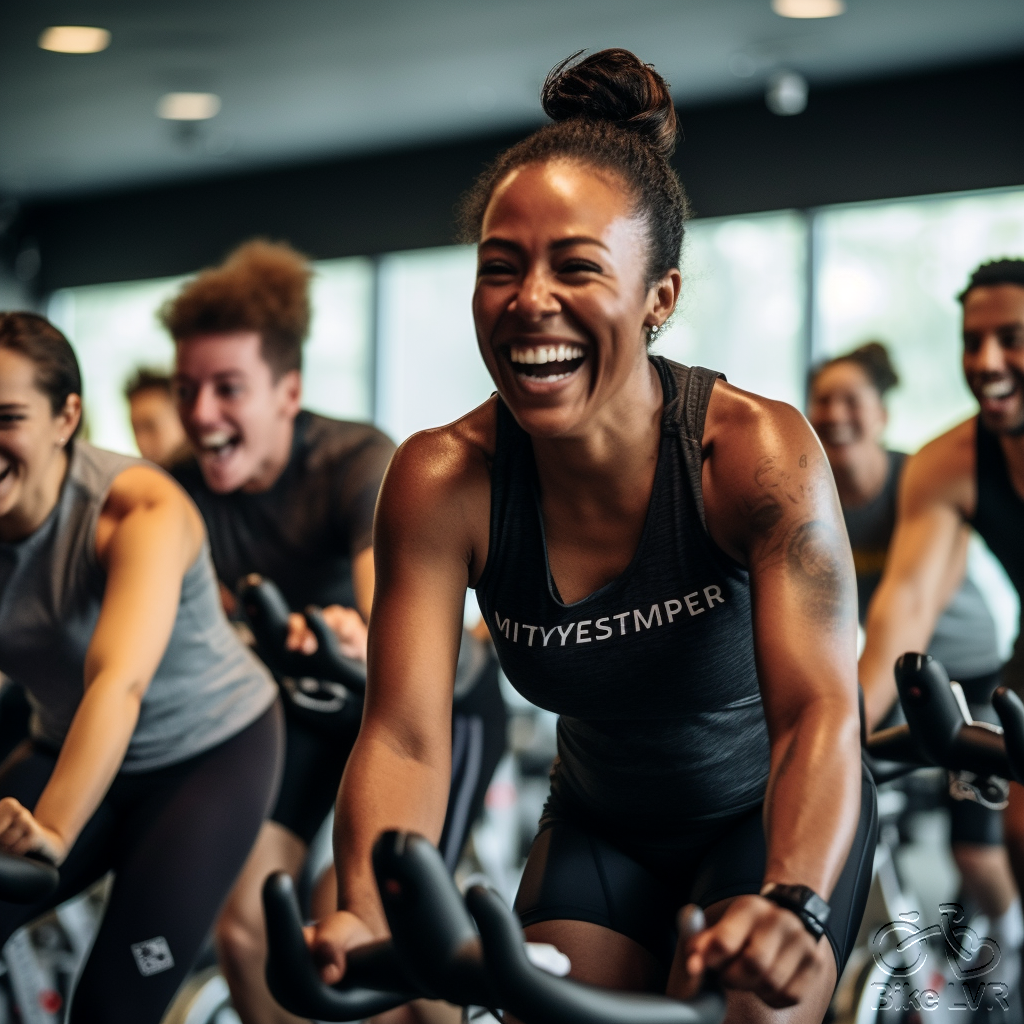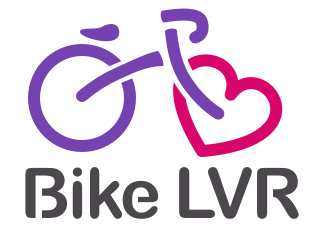
Entering your inaugural cycling class can be daunting, conjuring anxiety over the proper attire, needed equipment, and social missteps. It’s akin to the first day of school. Luckily, spin classes usually lack the sort of drama you might experience upon returning to classes after a long summer. For a seamless first cycling class experience, it’s helpful to keep some tips and tricks in mind.
What To Wear To Spin Class?
You should wear anything and everything you’d typically wear to work out. Wear a tank top, shorts, pants, and leggings (or even a sports bra).
If you need to figure out what gear would be best for your first spin class, I recommend a pair of leggings with an elastic waistband and some sneakers that fit well. The material should wick moisture away from your skin so that sweat doesn’t drip down into your eyes (which can get annoying).
In the wintertime I tend to go for something warmer like tights because it keeps me nice and warm during my workout without getting too hot during transitions between standing up at high speeds and sitting down on the bike seat again.
To stay safe, you’ll want to wear clothing that fits tightly, without loose fabric that can get tangled in the bike or cause injury. Wicking material is best for tops and shorts; avoid cotton as it absorbs sweat and will lead to chafing. Also, could you make sure that your socks are ankle-length or shorter, and pants should be tight-fitting at the bottom?
What Shoes To Wear To Spin Class?
Make sure you have the right footwear for spinning class. Cycling shoes are especially designed for cycling, and their features can make a huge difference in how comfortable and safe your ride is.
- A stiff sole helps you pedal efficiently. It keeps your foot from slipping off the pedal, which can cause injury and make it hard to maintain momentum during a workout. This also makes for a more stable position when pedaling at high speeds or climbing hills.
- They fit tightly around your foot so there’s no extra movement while riding—this helps keep them on securely as well as reduces potential blisters by keeping friction to a minimum between your feet and shoes..
- Cycling shoes are made of lightweight materials such as mesh fabric or microfiber leather that allow them to dry quickly after they get wet while sweating during class.
- Cycling shoe manufacturers design their products with breathability in mind; this means they will allow air flow through the material so sweat doesn’t build up too much inside the shoe during use.
- The cleats on cycling shoes attach directly onto pedals (although some newer models do come with clips), allowing riders complete control.
To purchase cycling shoes, you may wish to stop by a bike store near you. These professionals can help you select the right pair. Note that some shoes that work well for indoor cycling may not be as well suited for mountain biking but I use one pair for both.
Pants for Class
If you have done much bike riding in the past, you are likely familiar with the soreness bikers feel on their behinds after long rides. This feeling may be intensified at a spin class because you may have to pop up and down frequently.
For this reason, avid cyclers often invest in padded pants. There are many types of shorts, capris, and pants that come with this sort of support.
Additionally, you can opt for bike shorts with a padded section, also known as a chamois, so you can be more comfortable. Chamois come in various styles and materials, so you may have to try a couple bike shorts before you find one that is comfortable for you.

Tops
The best shirt to wear while cycling is moisture-wicking, airy, and not too baggy. Those first two qualities are essential when considering what to wear on the Peloton bike because you will likely become warm and sweaty during your workout. Additionally, women will want to wear a high-impact sports bra for maximal riding comfort.
Extra Spin Gear
There are a couple of additional items you don’t want to forget when you arrive at your first spin class.
- First, bring a water bottle to quickly rehydrate without getting off your bike. Opt for a bottle style that doesn’t require removing a lid to drink. Most spin studios have water fountains or stations where you can fill up your bottle with cold water, so choose one that has a wide opening on top so it’s easy to fill up quickly before class starts and after class ends.
- Bring a towel or borrow one from your gym so you can mop up sweat before it starts stinging your eyes.
- NO jewelry as it can be dangerous because it might get caught on the bike. If you really want some bling on your first spin class, consider wearing earrings instead of necklaces and taking off rings before entering class.
If you’re a novice cycler, you may be concerned about how much it will cost you to get all this gear. Take a deep breath and know that none of this equipment is essential. You can cycle in regular shorts, a t-shirt, and your running shoes. The fancier apparel can certainly make your workout more comfortable and effective, but you can wait to start investing until you know whether you enjoy spin classes.
What to expect at a typical Spin Class

Adjusting Your Spin Bike
On your first day of spin class, be sure to leave for the gym a bit earlier than necessary so you have plenty of time to set things up. Spinning is a fun and effective way to get fit, but it can be intimidating if you’ve never tried before. One of the best ways to get over any anxiety is to attend a spin class with friends or family members who can help you adjust the bikes in your studio.
You will need to adjust your bike’s settings so you can comfortably pedal without sustaining any injuries.
- Adjust the seat until it is level with the upper portion of your hip.
- Push one pedal to its lowest position and check that your knee is completely straight or bent at an angle of more than 35 degrees (your instructor will help). If this is not the case, modify the seat’s height until it aligns with both of these measurements.
- Put your hands on the handlebars and adjust their position until your elbows are moderately bent (they should not be bent as far back as possible). Make sure that there is about 15-20 cm between them and your chest cavity so that they don’t obstruct breathing. Your instructor will help with this adjustment if necessary.
- After making all necessary adjustments, start pedaling slowly while continuing to adjust things like resistance levels or brakes on others depending upon what type of bike/class style you have chosen..
- Most importantly though – don’t worry! Everyone was new once too!
Warming Up
Though every instructor may start class a bit differently, you will likely begin by doing a few basic stretches to prevent muscle strains. You may then start pedaling at a low level of resistance as you warm up. On your first day, be sure to experiment a bit with the resistance settings to get an idea of which levels you can safely pedal at.
Pushing Through at Spin Class
As your workout builds in intensity, your instructor may encourage you to do various exercises for a certain amount of time. You may be asked to increase the resistance to a specific range or pedal while standing up, for instance. Don’t be afraid to keep your resistance lower than the instructor suggests, especially when you are starting out. It takes time to build muscle and adapt to these intense workouts.
Cooling Off
Finally, the class will begin to slow down, pedaling at a lower resistance level for a time. After everyone’s pedals are still, be sure to take a moment to briefly stretch a second time. Most importantly, hydrate! Once you quell worries such as what to wear to a cycling class and how to adjust your bike, you are free to push yourself to greater levels of fitness while meeting new people.
What’s Next?
With the right gear and preparation, you’ll be ready to tackle any spin class head on. The best way to prepare for your first class is by educating yourself about what will happen during it so there are no surprises when it comes time for you to get on your bike!
That said, don’t stress too much about getting everything perfect before showing up at the studio; everyone starts somewhere as they learn new things in life. Just remember that the more comfortable you feel with yourself and those around you, the more fun we’ll all have together out there on our bikes!
Spin Class FAQs:
What should I avoid wearing to spin class?
- Cotton: Cotton will absorb sweat and make you feel uncomfortable.
- Loose-fitting clothing: Loose-fitting clothing can get caught in the pedals or the bike, which can be dangerous.
- Denim: Denim is not breathable and will quickly become uncomfortable.
Is it a good idea to wear a heart rate monitor during spin class?
A heart rate monitor can be a great tool to track your intensity and progress during spin class. However, it’s not a requirement. Could you check if the one provided by the gym matches the bike’s computer?
Are gloves necessary for spin classes?
Gloves are not typically necessary for spin classes. However, padded cycling gloves could be a good option if you’re getting blisters or your hands are uncomfortable on the handlebars.
What kind of socks should I wear to spin class?
Choose moisture-wicking socks to keep your feet dry and comfortable. Consider cycling-specific socks designed to reduce friction and provide extra padding in key areas.
Should I wear a hat or cap during spin class?
While a hat or cap can help keep sweat out of your eyes, it may also trap heat and make you feel hotter. Many people prefer to wear sweatbands or bandanas instead.
